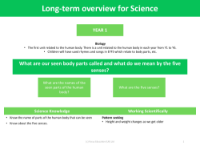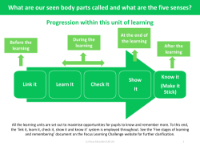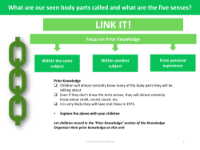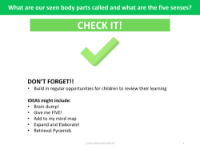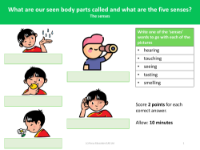National Curriculum objectives - Body Parts - Year 1
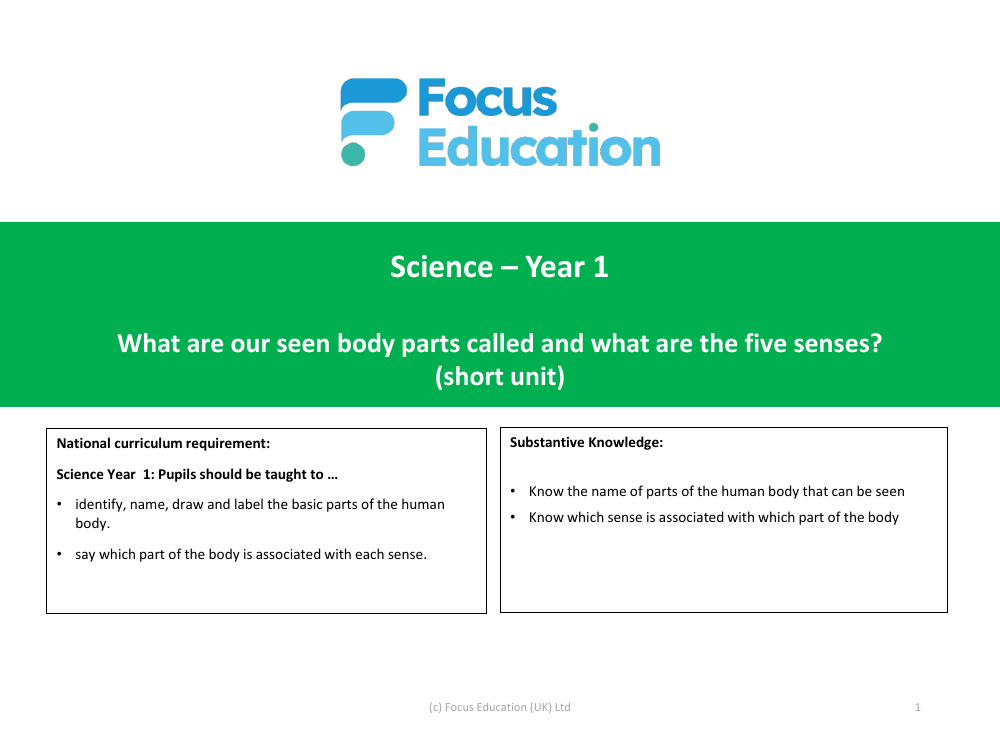
Science Resource Description
In Year 1, as part of the national curriculum for science, pupils are expected to develop a foundational understanding of human anatomy and the senses. The curriculum specifies that children should be able to identify, name, draw, and label the basic parts of the human body that are visible. This includes being able to recognise and articulate the names of body parts such as the head, arms, legs, eyes, ears, mouth, nose, and hands. Additionally, students are taught to associate these body parts with their corresponding senses, fostering an awareness of how we interact with the world around us.
The curriculum also aims to instil substantive knowledge in pupils by ensuring they know the names of the body parts that can be seen and understand the relationship between these parts and the five senses. The five senses—sight, hearing, taste, smell, and touch—are each linked to specific organs: the eyes, ears, tongue, nose, and skin, respectively. Through engaging lessons and activities, children in Year 1 will explore these concepts in a short unit, learning to connect the sensory organs to their functions, which is a key aspect of their scientific education at this stage.
